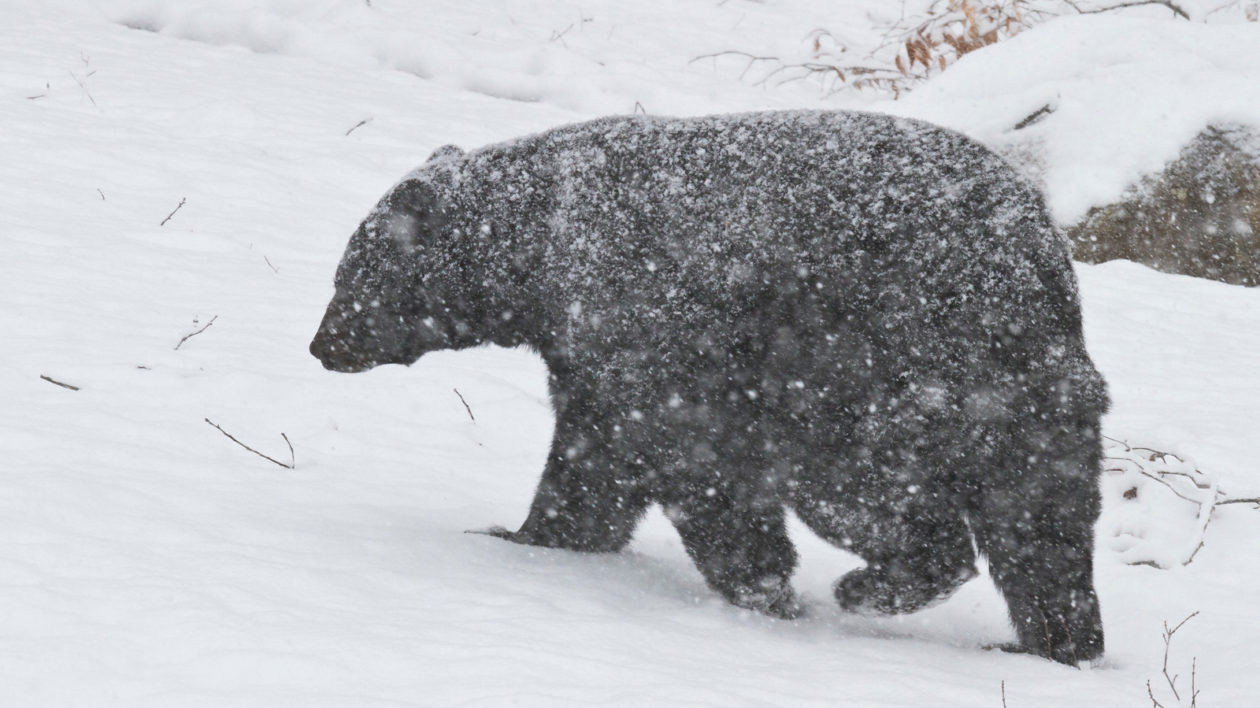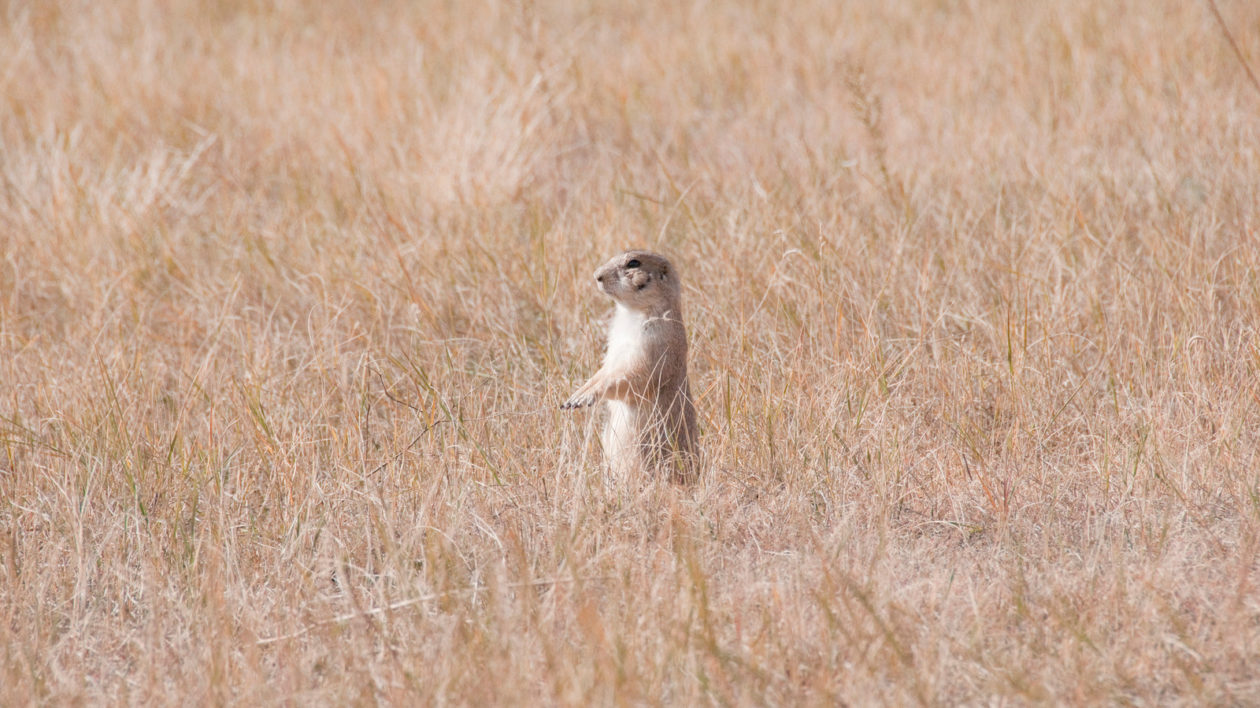In the middle of winter, when it’s cold and dark and snowing, most people cuddle up on a couch with a thick blanket and mug of something warm.
Black bears take a nap and recycle their pee.
While the process is a bit more complicated than that, the end result is a highly efficient system that has evolved to allow bears to hibernate for months and retain most of their muscle mass.
It’s one of countless adaptations by species across the globe to deal with harsh, winter conditions. These adaptations are also a source of constant study.
While you sit warm by your fireplace this winter, consider these four secrets to survival by creative creatures.

Black Bears: Recycling Urine Conserves Strength
Imagine dropping into a deep sleep after surgery or an accident and waking up four months later healed, with little muscle mass missing. It sounds like something out of a science fiction movie, but is reality for black bears.
Hank Harlow, a professor emeritus at the University of Wyoming and emeritus director of the University of Wyoming-National Park Research Station at Grand Teton National Park spent large chunks of his storied career tracking bears to their dens, measuring body fat and muscle mass first in the summer, then early in hibernation and again five months later. What he and other researchers found is that bears don’t pee while they sleep. They also don’t lose much muscle mass and strength.
In five months of inactivity, a bear loses on average about 25 percent of its strength. In three or four months of not moving, a human would lose about 60 percent.
Why?
“They do that by recycling their urea. When you get out in the morning and pee, you are peeing out a lot of nitrogen. They are recycling it into their blood, then guts and then to the liver. The liver is where they make the amino acids, and then the skeletal muscle is resynthesized. What they lose in muscle mass is recycled.”
It also heals.
Harlow spent years working with Paul Iaizzo, a professor of surgery at the University of Minnesota documenting how bears recover from wounds during hibernation.
Bears with small incisions before hibernation healed completely with limited scarring by the end.
“Even significant injuries that were incurred prior to hibernation, but which had not begun to heal at the time of hibernation, were completely resolved in 1-2 months,” Iaizzo writes on his University of Minnesota website. “This unique healing ability is a clear survival advantage for bears, as those unable to heal while hibernating could suffer loss of body fluids, greatly increased metabolic demands, and/or toxicity from infection.”

Black-tailed Prairie Dog: Hibernation on Demand
Black-tailed prairie dogs can choose when they do and don’t hibernate.
That’s not a given for prairie dogs. White-tailed prairie dogs, a species found farther west in the United States, are traditional hibernators: They disappear underground in the fall and don’t come back up until spring. They go into what is called a “deep hibernation,” waking up every 15 to 20 days to stretch and pee, then go back to sleep.
Black-tailed prairie dogs, on the other hand, face most of winter head on.
“They have the genes to hibernate, but they only turn it on when it’s really tough,” Harlow says. “Only when they’re starving and really cold.”
Harlow and other researchers once gathered both species of prairie dogs and placed them in a confined area in the fall with proper bedding and turned on the air conditioning. At 7 degrees Celsius, the white-tailed prairie dogs dropped into hibernation.
The black-tailed ones didn’t. They jabbered at Harlow and his colleagues, surviving the cold. It wasn’t until the researchers withheld food, and the creatures started losing weight, that the prairie dogs began hibernating.
Instead of hibernating for 20 days, they might go down for 14 before emerging and checking the conditions.
“If there’s food, they’ll stay back up.”

Arctic Fox: Frostbite-proof Pads
As their name implies, most Arctic foxes spend their time in, well, the Arctic, or the Canadian or Eurasian tundra, where it’s generally cold and often snowy and icy.
Their thick fur coats and bushy tails keep their bodies warm in an obvious way. But what about their feet? How can a mammal spend most of its day walking on a sheet of ice with nothing more than the pads on its paws?
Two ways: a counter-current vascular heat exchanger and polyunsaturated fats. The former prevents cold from circulating throughout the animal’s body, and the latter prevents the critter’s feet from turning black from frostbite.
To explain countercurrent blood flow, first think of your own feet or hands. Blood from your heart is pumped throughout your body, circulating through the ends of your fingertips and toes and making its way back to your heart. If your feet or hands are cold, that blood cools when it reaches your hands and feet. The cool blood then circulates back through your feet and legs and insides to your heart, eventually cooling your body.
But in an Arctic fox, the arteries and veins carrying blood down to their feet and back up to their core are quite close together. So close, in fact, heat from the blood going down jumps over to the blood going back up, warming the returning blood before it has a chance to cool the body’s core.
“We can’t do that,” Harlow says. “We would get frostbit.”
So how can they?
Their paws have fats that better resemble margarine. Polyunsaturated fats like those in the inexpensive butter-alternative don’t get hard and nonfunctional at low temperatures. Unique membranes also help prevent tissue damage. That means even though the full force of a body’s heat isn’t circulating through their appendages, their feet, or paws, stay healthy.
Wood Frogs: Green Ice Cubes
In the winter, when temperatures are cold enough, wood frogs turn into green ice cubes.
Ken Storey, a professor at Carleton University in Canada, who studies freeze tolerance, explains it best: “Water outside of the cells is frozen and it leaves behind really concentrated goop. Inside the cells there is never ice… All the cells are shrunken down and what is inside the cell is a huge amount of sugar and a little bit of water left bound to sugar not ice.”
But humans also have large amounts of water inside our bodies, and even some sugar, so why can’t we freeze?
If we made as much sugar as a frog does, we’d die. Even if we had enough sugar to slip into a diabetic coma, we’d still need to make 20 times more.
That means if our bodies filled with ice, the water freezing on the outside of our cells would suck water out of the inside of the cells until the cells collapsed and crushed.
“Another sugar would do, glycerol would do, but the frogs don’t build that up. Nature went with glucose,” says Storey. “It’s easily moved around and easily eaten. In the fall, frogs go on a crazy eating spree and build up for winter. Hunger goes up and they eat everything from moths to ants. They put on weight, and it isn’t as fat, it’s as glycogen.”
Then they find a dry forest floor, burrow under some dead leaves and freeze. In the spring, they have enough glucose left to thaw and look for a mate before insects come back out. “They’re clever and also adorable,” adds Storey.




So why can’t humans admire and DO something about how we cope with climate change…???…
That was a gross video but thanks, I think.
I LOVED the frogs.
I would love to know how snakes survive in these freezing temperatures. I have a darling garter snake that has been in my backyard for a couple of years. I know where it stays in the winter but it did not appear to be fattened up when it went in for the last time. How will it live without freezing or starving to death?
Hi Sally, Thank you for the question! Most snakes hibernate by going into hibernating sites that are below the frost line. Garter snakes may have some tolerance for freezing. Because they are cold blooded, their metabolism gets very slow when they are cold, which means they don’t need to have as much fat stored in advance as a mammal would to survive hibernation: http://www.bcreptiles.ca/reptiles_north.htm
According to the Arctic fox’s caption, Canada is now in the United States.
Thank you Josh! A good reminder to always be careful with copy / paste.